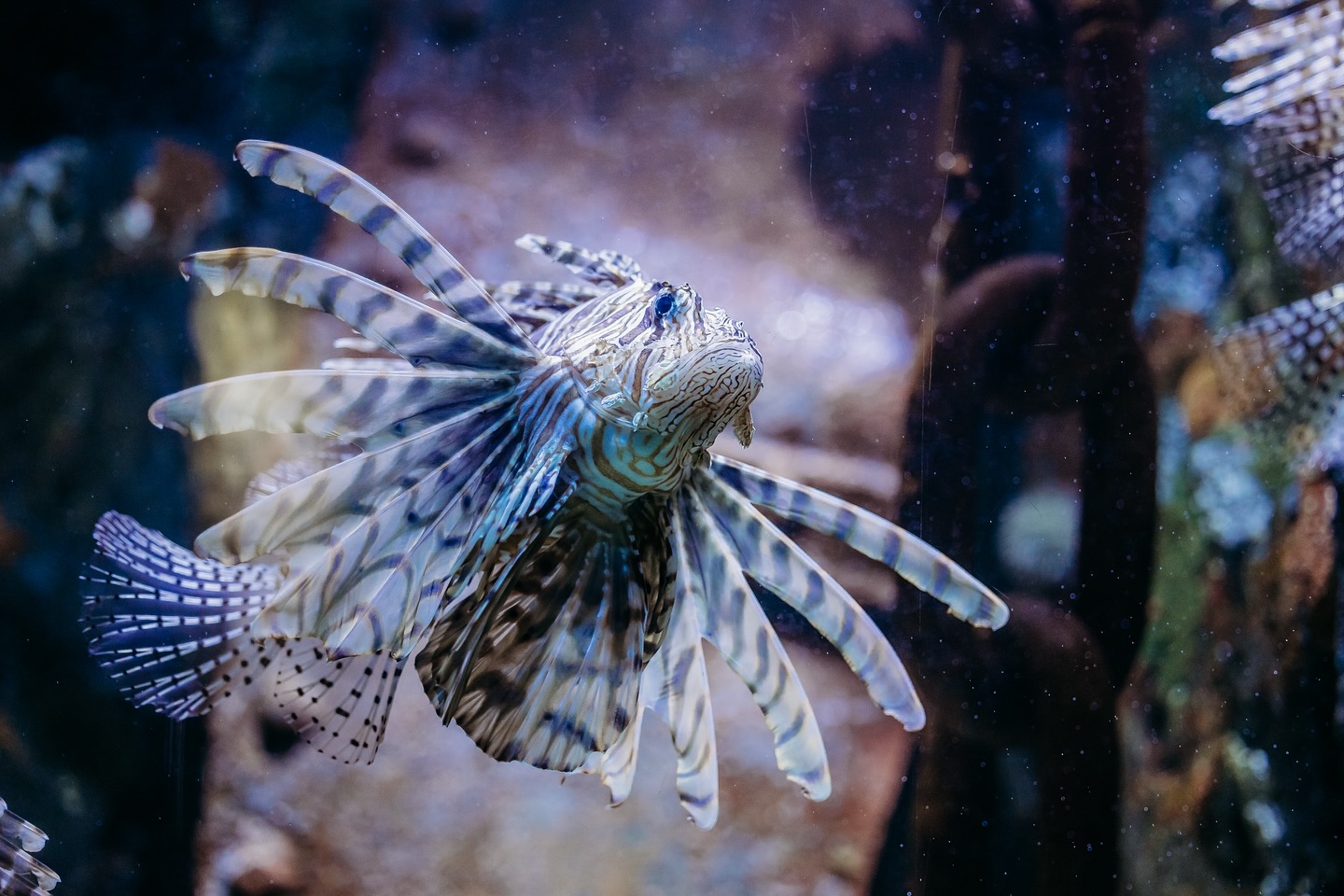-
Lionfish and Their Spread: Understand how lionfish became a major invasive species in the Caribbean and along the East Coast, including their origins and pathways into these regions.
-
Ecological Impact: Explore how lionfish disrupt local ecosystems, focusing on their predatory behavior and the threat they pose to coral reef biodiversity.
-
Physical Characteristics: Learn about the lionfish’s anatomy, focusing on their venomous dorsal fins and how these adaptations aid in both defense and hunting.
-
Conservation Efforts: Discuss strategies for managing the lionfish population, emphasizing responsible pet ownership and environmental education.
- Importance of Ecosystem Balance: Highlight the critical need for maintaining balance in marine environments and the broader implications of invasive species.
Lionfish and Their Spread
Lionfish are native to the Indo-Pacific region, but have found their way into the Caribbean and along the East Coast of the United States. This invasion likely began due to the release of pet lionfish into the ocean, a consequence of irresponsible pet ownership. Their proliferation in these waters represents a significant ecological challenge. Without the natural predators that balance their populations in their native environments, lionfish thrive unchecked. This invasive spread is facilitated by their rapid reproduction rates, with females laying thousands of eggs several times a year. This adaptability has enabled them to colonize warm ocean habitats around the globe.
Lionfish have become a major invasive species problem due to several factors. Their introduction into foreign ecosystems bypasses the natural checks and balances that typically regulate their populations. Moreover, their striking appearance makes them desirable in the aquarium trade, contributing to their spread through accidental or intentional release. Understanding these vectors is crucial for developing strategies to control their expansion and mitigate ecological damage.
Ecological Impact
Once lionfish establish themselves in a new environment, their impact on local ecosystems can be devastating. They primarily prey on fish and shrimp, quickly altering food webs and decreasing biodiversity. Lionfish consume a variety of species, including those that are vital for the health of coral reefs. By reducing populations of herbivorous fish, lionfish indirectly promote algal growth, further threatening coral ecosystems. This disruption hampers coral regeneration and resilience, leading to degraded reef structures.
The ecological footprint of lionfish extends beyond immediate prey depletion. Their presence can lead to long-term shifts in community composition, affecting species that rely on coral reefs for shelter and food. Predatory fish populations are particularly vulnerable, leading to ripple effects throughout the marine environment. As a result, ecosystems that have evolved over millennia are at risk of rapid and potentially irreversible change.
Physical Characteristics
Lionfish possess a distinctive appearance, with vibrant stripes and long, flowing fins. Their aesthetic appeal, however, belies their dangerous nature. These fish are equipped with up to 18 venomous dorsal fins. This defensive adaptation deters predators and poses a risk to humans who may accidentally come into contact with them. The venom, while rarely fatal, can cause severe pain and swelling, highlighting the need for cautious interaction.
These physical traits also make lionfish efficient hunters. Their quick reflexes and ambush predation tactics allow them to capture prey with ease. Lionfish can consume prey up to half their own body size, showcasing their capacity to affect substantial shifts in local fish populations. Their hunting strategy relies on both stealth and speed, traits that are enhanced by their physiological adaptations. Understanding these characteristics is crucial for managing populations and educating those who encounter them in the wild.
Conservation Efforts
Efforts to manage and mitigate the impact of lionfish focus on several strategies. Public education plays a key role, emphasizing the importance of never releasing exotic pets into the wild. Organizations advocate for responsible pet ownership to limit unintentional introductions. In areas where lionfish populations are established, removal initiatives are underway. These efforts, often spearheaded by local communities, involve spearfishing and trapping programs to reduce numbers and protect native species.
In addition to these immediate actions, researchers are investigating longer-term solutions. These include understanding potential biological controls and enhancing public awareness campaigns to foster greater engagement. By removing lionfish and restoring balance to affected ecosystems, conservationists aim to preserve biodiversity and maintain ecosystem services essential to human and wildlife wellbeing.
Importance of Ecosystem Balance
The lionfish invasion underscores the broader importance of maintaining healthy and balanced ecosystems. Coral reefs, often referred to as the rainforests of the ocean, are hubs of biodiversity. They support a wide array of marine life and provide numerous ecological and economic benefits to human populations. When invasive species like lionfish destabilize these environments, the consequences can be far-reaching, affecting everything from fisheries to tourism.
Efforts to control invasive species and protect reef ecosystems must be multi-faceted, involving scientific research, public policy, and community engagement. Conservation strategies need to be adaptive, taking into account the complex interactions within marine environments and the evolving threats they face. By fostering a deeper understanding of these dynamics, we can work to mitigate the impact of invasive species and safeguard our oceans for future generations.
*****
Source Description
Lionfish have become a major invasive species in the Caribbean and along the east coast after being released into the wild. These venomous creatures, with up to 18 needle-like dorsal fins, use their defensive venom to protect themselves – but their striking appearance and quick reflexes make them efficient hunters.
Preying on fish and shrimp, lionfish disrupt local ecosystems and threaten the balance of coral reefs. Native to the Indo-Pacific, they’ve spread to warm ocean habitats worldwide.
At Riverbanks, we encourage responsible pet ownership and urge everyone to never release exotic species into the wild. 🌎💙


